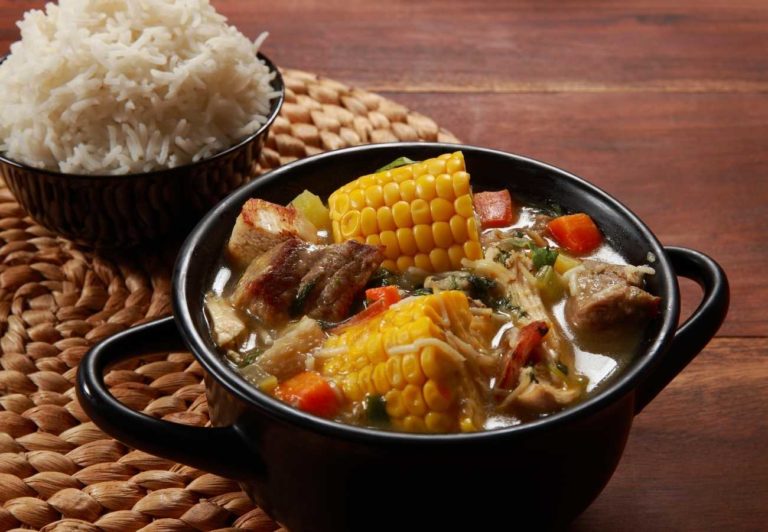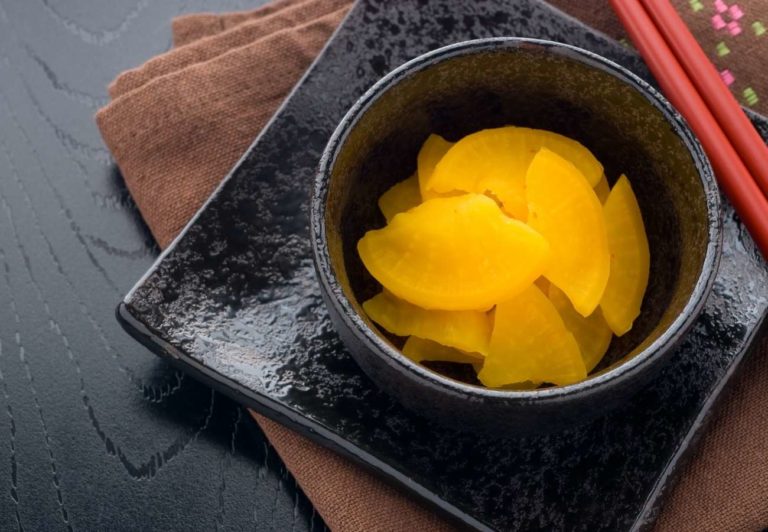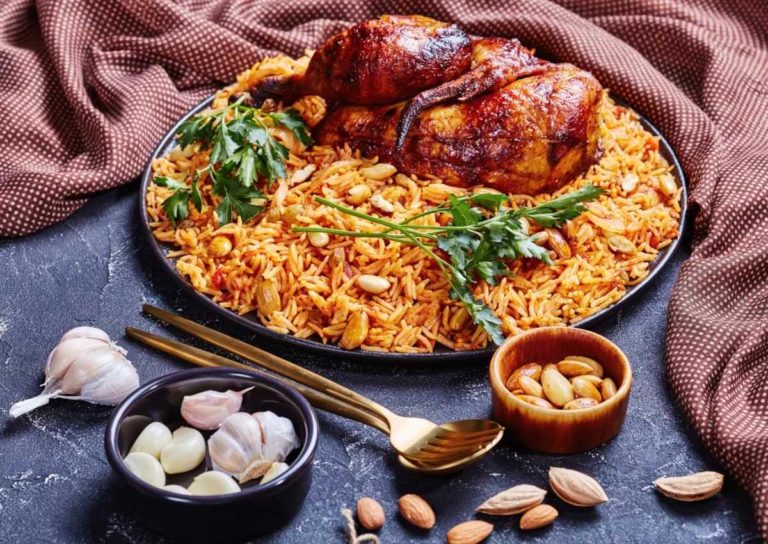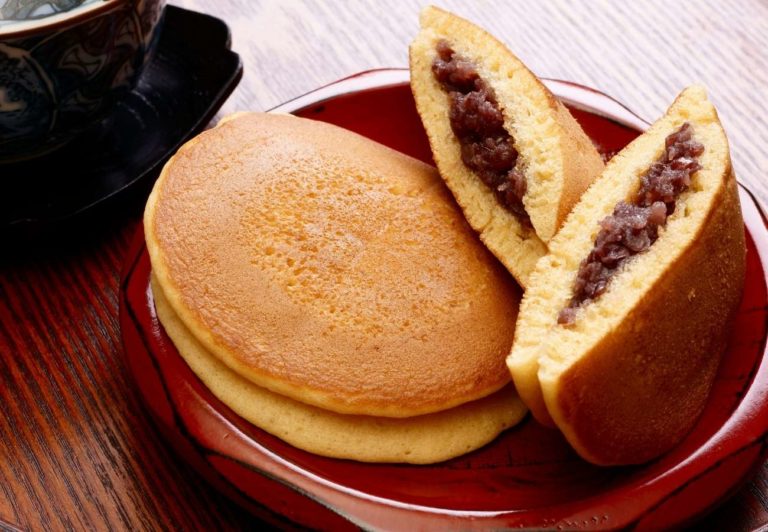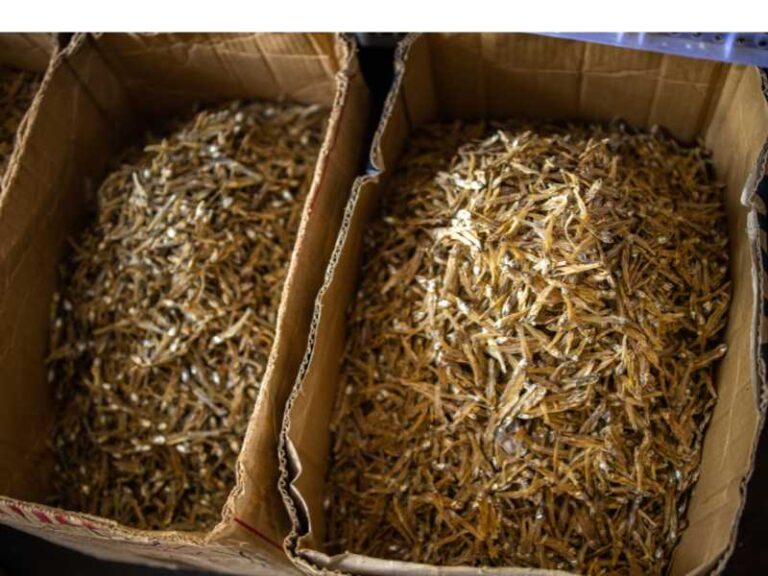South Korean Food: 27 Traditional Dishes of South Korea
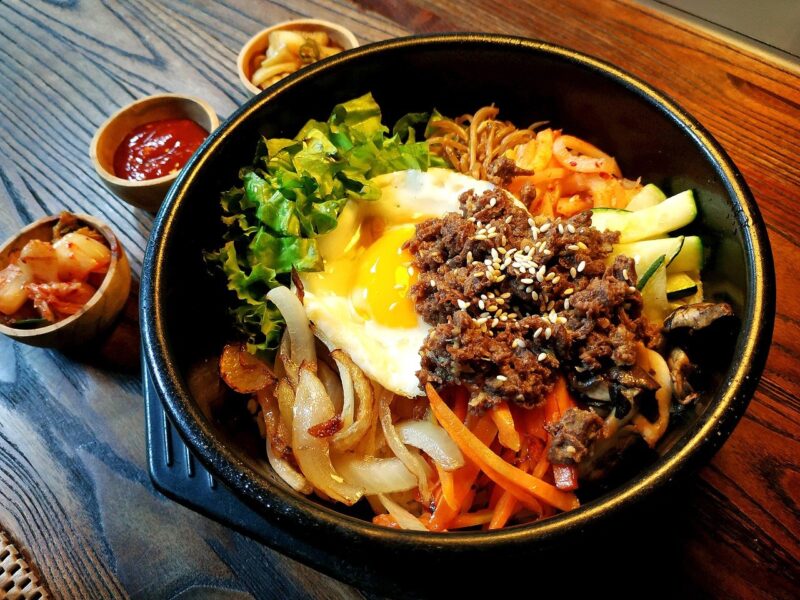
South Korean cuisine is often characterised as savory, hearty, nutritious, and spicy. But dig a little deeper and there is so much more to uncover in the vast, incredibly unique culinary landscape that Korean food has to offer.
Much of the South Korean cuisine has evolved over the years, with many core elements influenced by the cuisines of China, Mongolia and Japan. It may also go without saying that there are significant similarities with North Korean cuisine, owing to the fact that they were one united country prior to 1945.
Newer Korean foods have taken on a life of their own, however, as we see more innovative dishes making a claim for inclusion in what constitutes traditional South Korean cuisine.
Kimchi
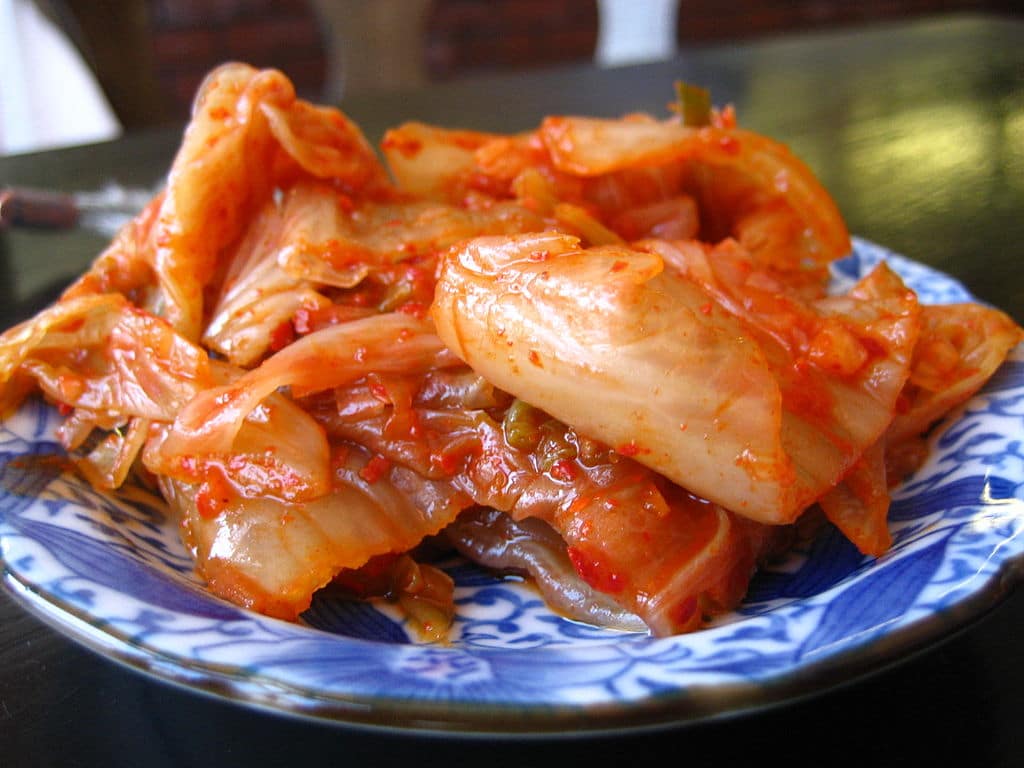
Kimchi is first in line because it is one of the most recognized South Korean foods in the world. It has over 100 variations based on flavors used when fermenting.
The most common main ingredient is Napa cabbage, although a variety of other vegetables can also be used. It can be enjoyed on its own or accompanied by white rice. It can also be added to soups, rice cakes, and porridges.
Kimchi is made by preserving the cabbage in a bed of ginger, garlic, scallion, and pepper. It can be spicy or not-so-spicy. If you want spicy, you will find plenty in the region of Gyeongsang while the mildly spiced variation can be enjoyed in the region of Hwanghae-do.
Kimbap/Gimbap
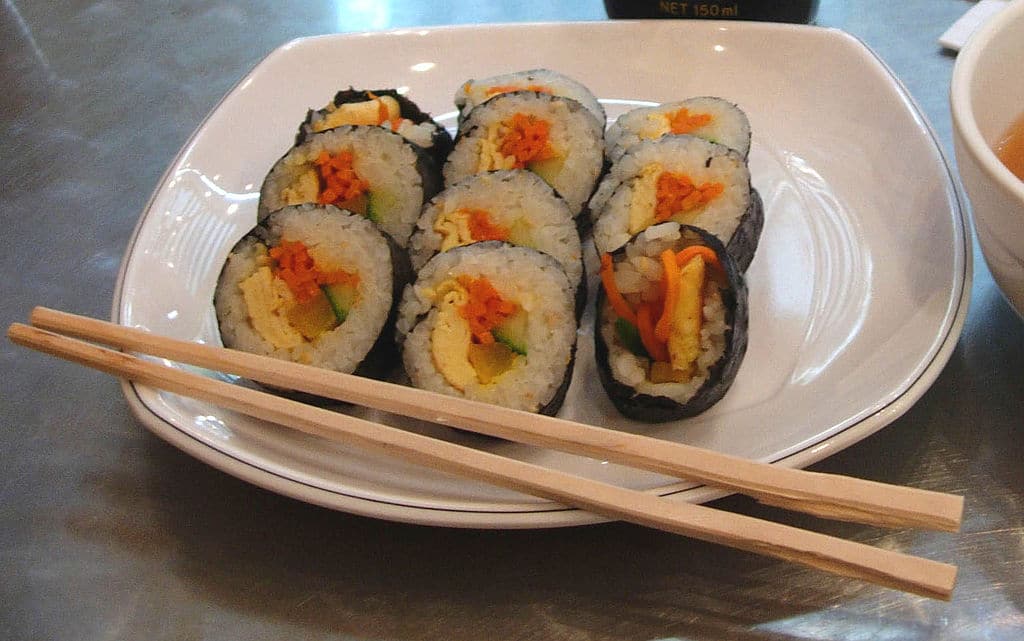
Visit any street in South Korea and you will find Kimbap or Gimbap. This is sushi, the Korean way. It comprises of rice, stir-fried vegetables, spinach, and meat. You will be presented with well-wrapped sushi in a seaweed roll that is cut into bite-size pieces. It is accompanied by kimchi on the side.
Seolleongtang
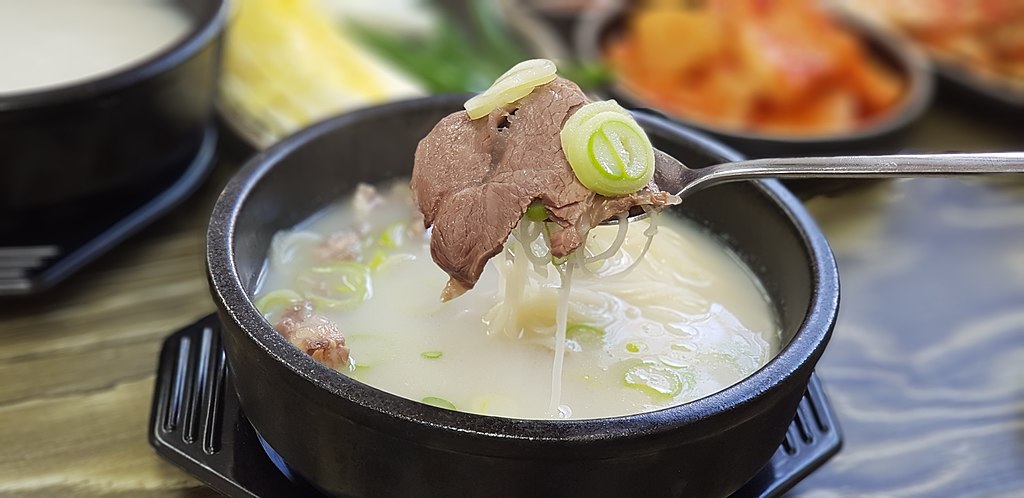
Seolleongtang (ox bone soup) is a simple yet delicious soup that is prepared with beef bones, black pepper, garlic, and scallions. You may also find a few strips of meat thrown in. It is accompanied with noodles or rice.
Samgyeopsal
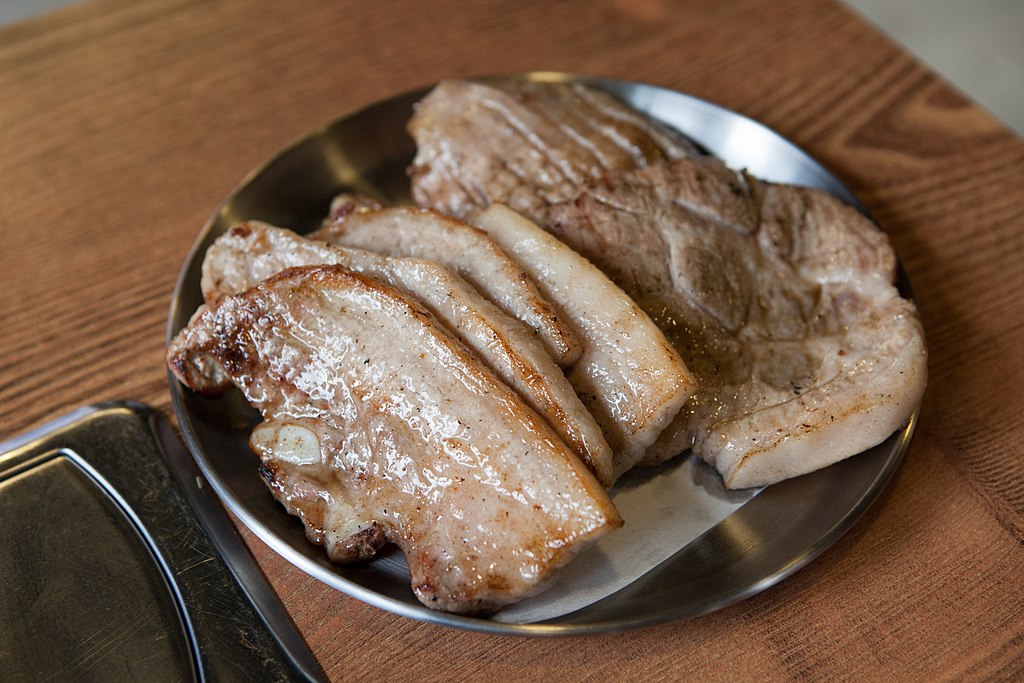
Samgyeopsal comprises of thin strips of pork that are prepared right in front of you. There is no marinating involved, just a dip in seasoning, a dash of sesame oil, and thrown in a lettuce wrap with a bit of onion and garlic. Green chili peppers, button mushrooms, and kimchi are also often thrown in.
Bibimbap
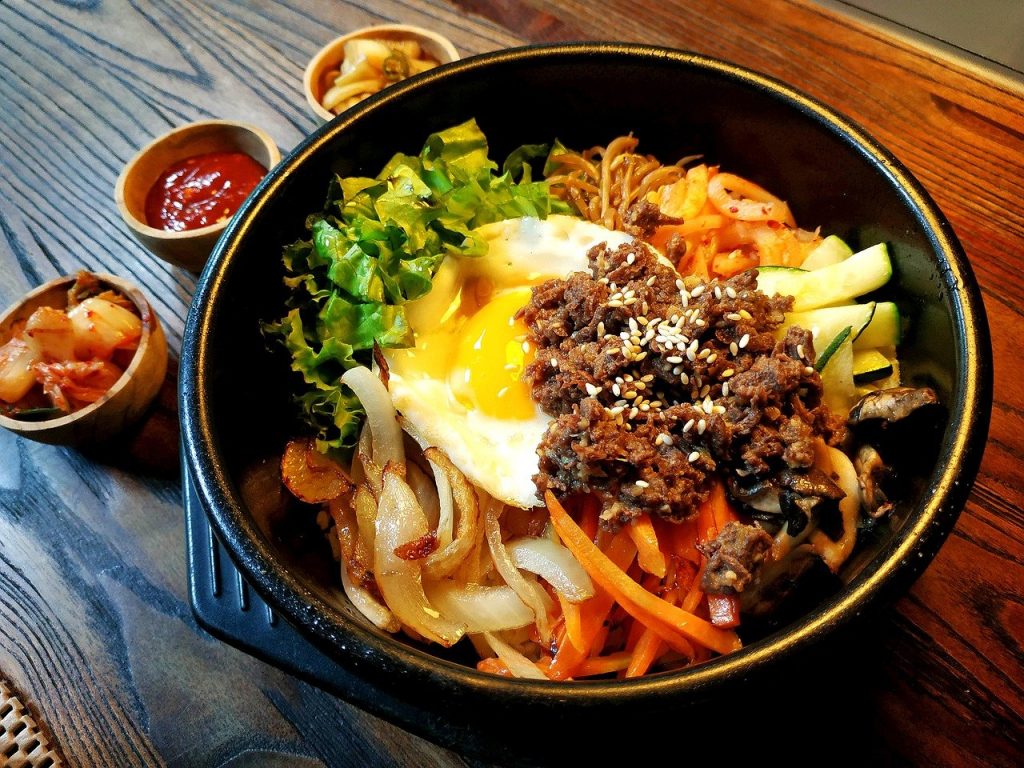
Bibimbap comprises of a variety of vegetables, kimchi, and meat. It may be topped off with a sunny side up egg. There are variations to Bibimbap, there is the hot version and the cold one.
The hot one is known as Dolsot Bibimbap and is served scorching hot in an earthenware pot. Once on your table, you will need to immediately mix it to avoid scorched rice at the bottom! Conversely, the cold version is served in a metal box.
Bulgogi
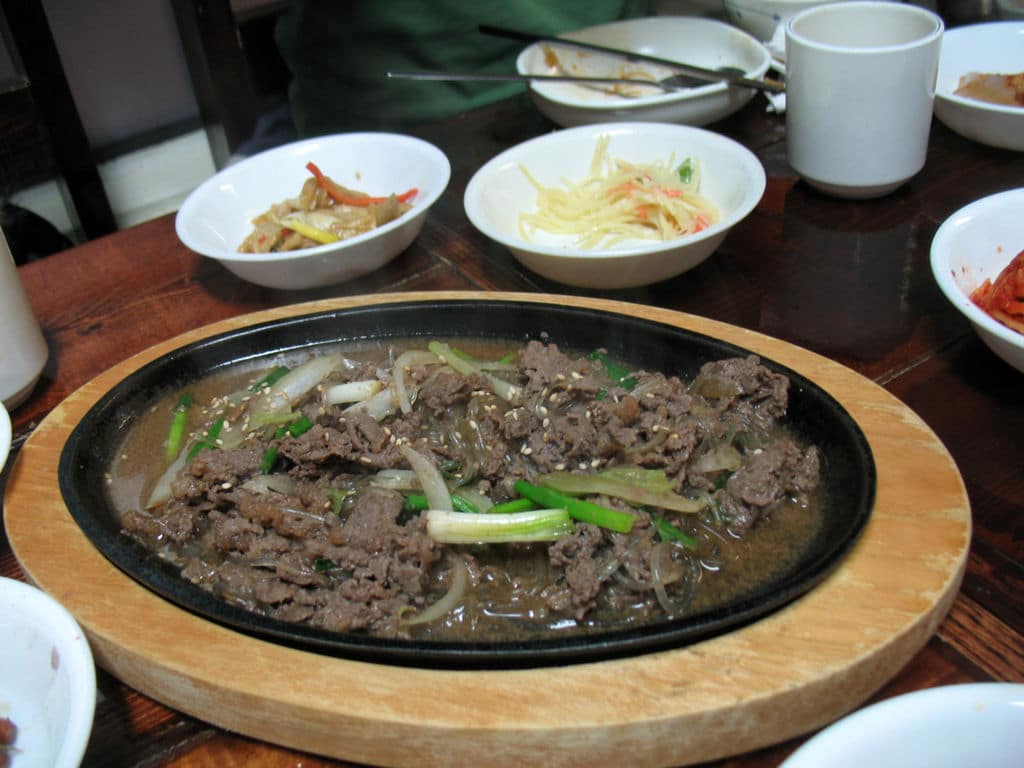
Bulgogi comprises of grilled marinated beef normally wrapped in lettuce. It can be flavored with sliced onions and garlic. Traditionally, it is enjoyed with ssamjang, a thick, red paste that is on the spicy side.
Korean Fried Chicken
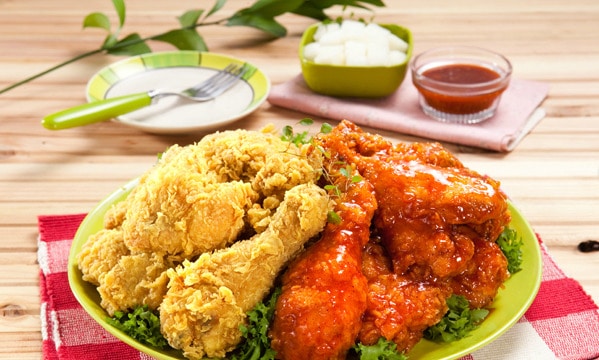
Korean fried chicken is a world away from the American fried chicken and is prepared with a coating of sweet and spicy sauce. For a spicy kick, some green pepper may be thrown into the coating.
The chicken is then double fried to ensure you enjoy a crispy, crunchy outer skin with a juicy middle. Korean fried chicken is generally washed down with beer.
Steamed Mandu Dumplings (Jjin Mandu)
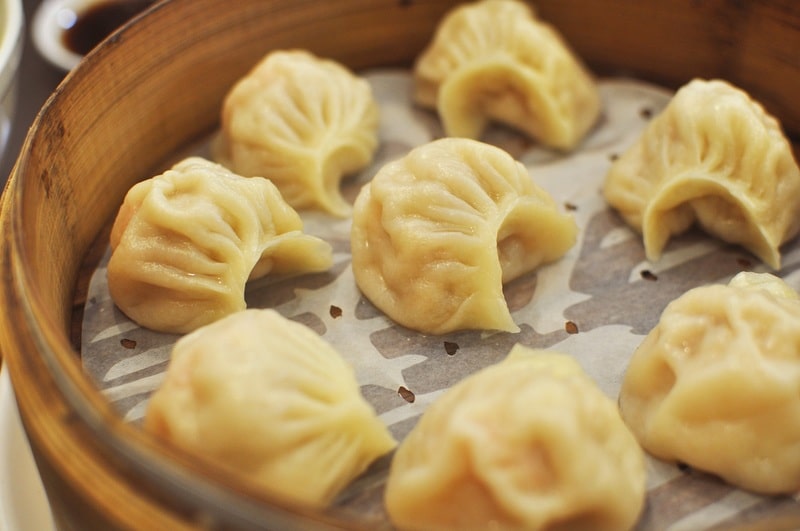
Korean dumplings resemble their Japanese or Chinese counterparts. The dumplings comprise of different stuffing in a noodle-like wrap. Stuffing may include pork, carrots, mung bean noodles, cabbage, and onions. This delicious goodness is steamed to perfection before being served.
Tteokbokki
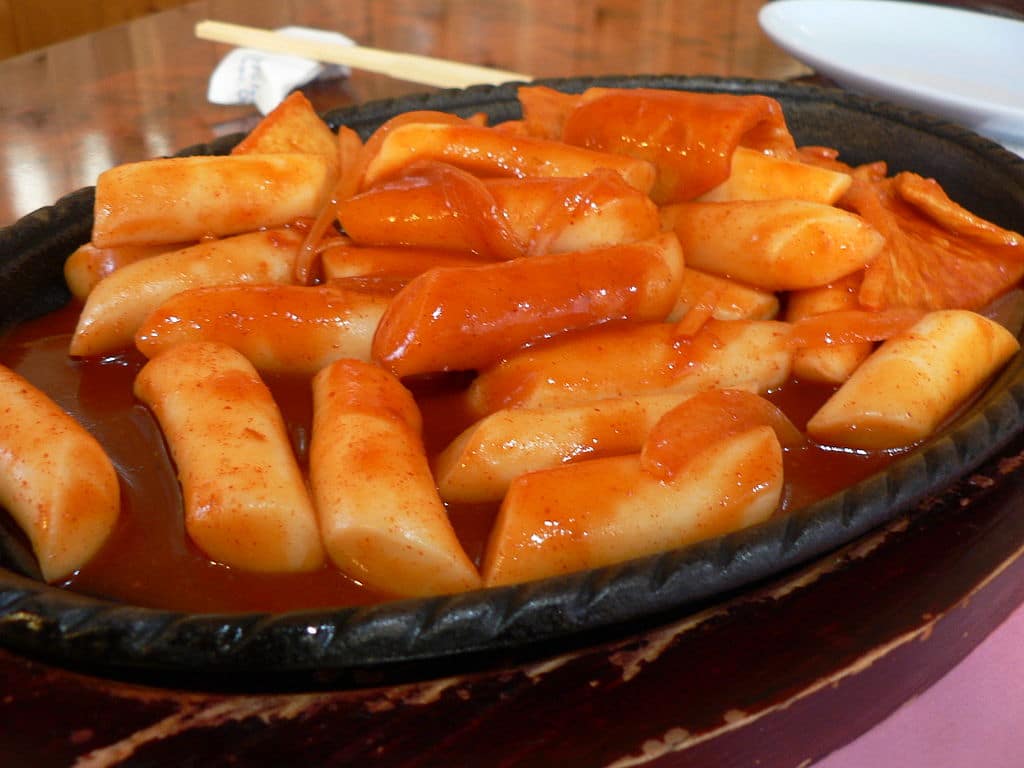
Tteokbokki is a delicious street food dish, widely available at virtually every street corner in Seoul. This dish comprises of fish cakes and rice cakes.
The rice cakes are steamed and sliced and served with the fish cakes on a bed of scallions and a sweet and spicy chilli paste sauce. Other ingredients such as black soybean may be thrown into the mix.
Samgyetang
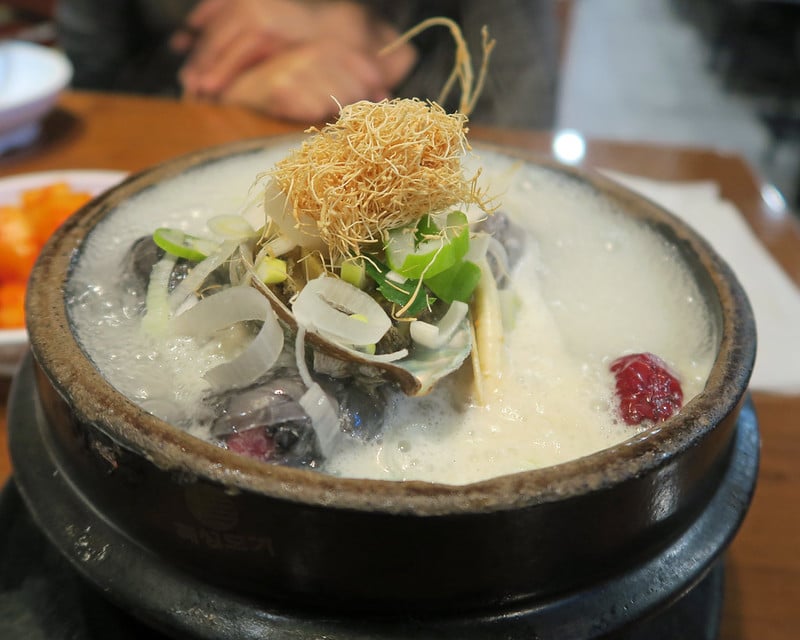
Samgyetang is best enjoyed in the hot summer months as the Koreans believe that hot soup will help preserve your health. The chicken is thrown into a flavorful mix of ginseng, sweet rice, and garlic. It is typically washed down with a glass of insamju (ginseng wine).
Japchae
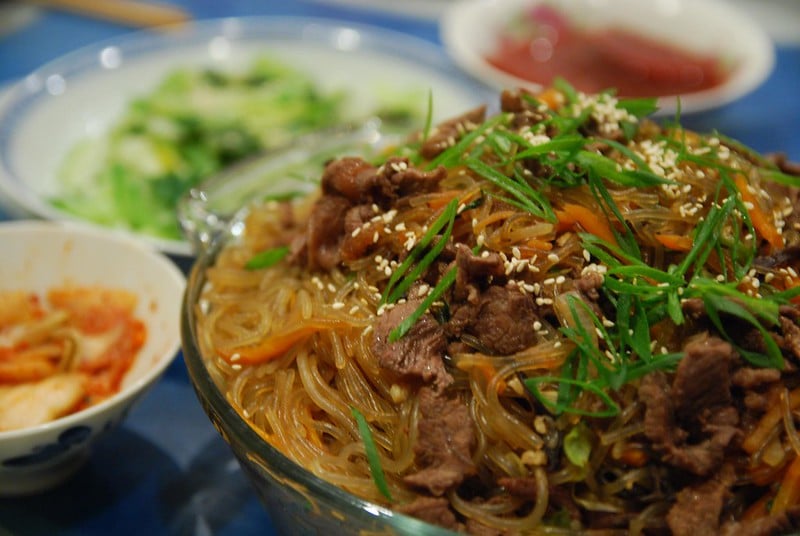
Japchae is not your ordinary noodle dish. It is a delectable blend of noodles, mushrooms, beef, sesame oil, and a variety of vegetables. The noodles themselves are made with sweet potato hence the orange/brown color. The noodles have a slightly chewy texture and are sweet and flavorful.
Another thing that sets the Japchae apart from other Asian noodle dishes is that it is not floating in the soup. This is no surprise as the Koreans look down on having to have your bowl so close to your mouth as you eat!
Soondae (Blood Sausage)
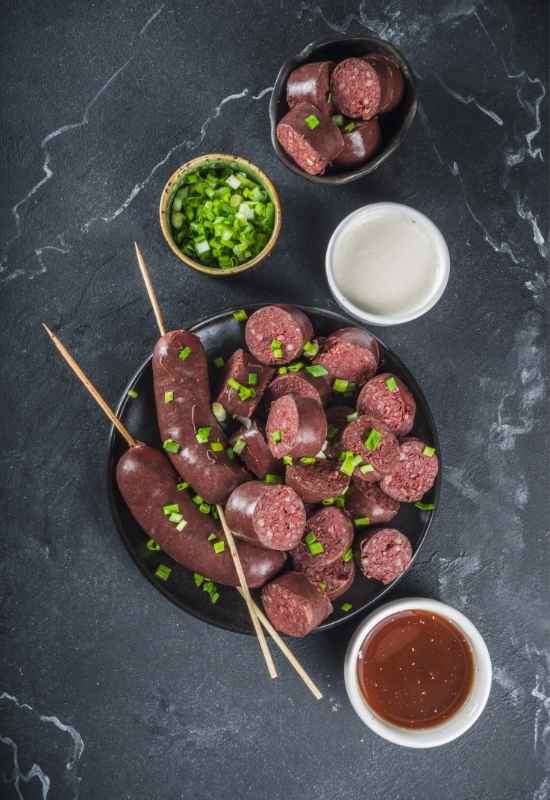
Soondae (or blood sausage) is a sausage made from the intestines of a cow or pig, the animal’s blood and various other fillings.
Most common ingredients used to fill the sausage casing include dangmyeon (glass noodles), vegetables and rice. Of course, it’s the blood that makes the dish so distinctive and slightly unusual, but it it is hugely popular throughout the country where it is commonly served by street food vendors.
Sundubu-Jjigae
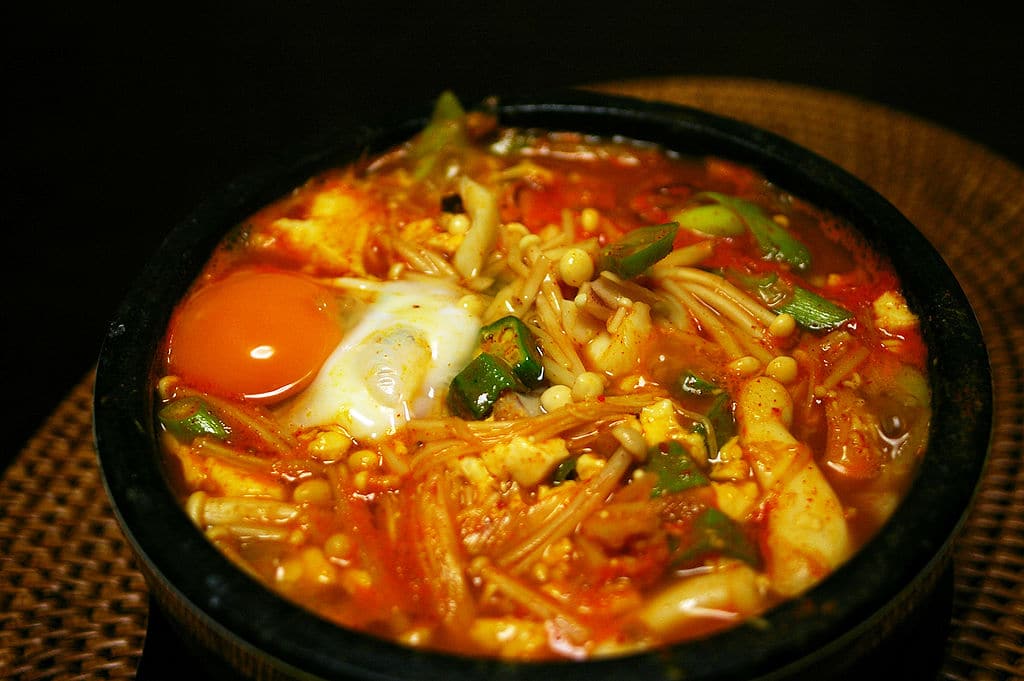
Sundubu-jjigae is a traditional tofu stew dish that comprises of the dubu (tofu), a blend of vegetables, seafood, chili paste (gochujang), and pork or beef. There are different variations of Sundubu-jjigae depending on the chef and the region. Traditionally though, a raw egg will be thrown into the mix for added flavor.
It is served with a side of pickled vegetables or steamed rice. It is best served hot which is why it will be presented in a traditional earthenware pot.
Hotteok
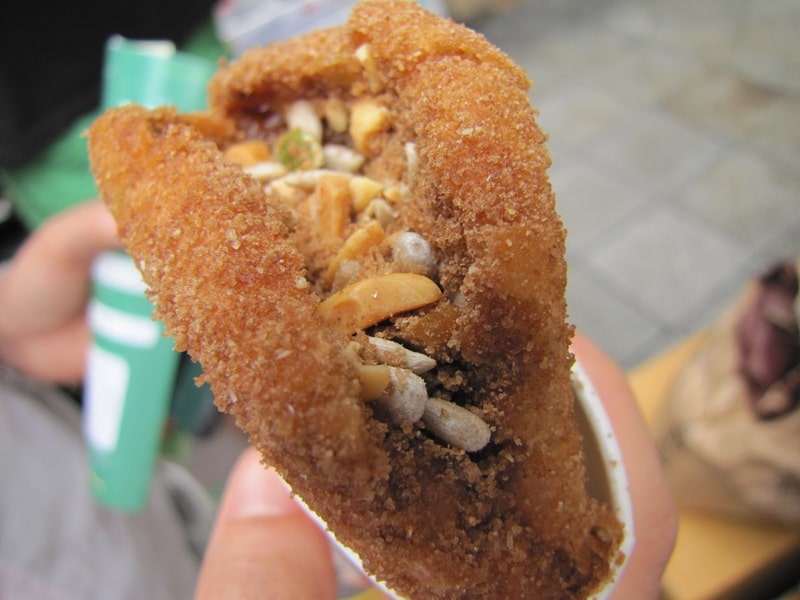
Hotteok is another common street food found in Seoul. It comprises of your traditional pancake ingredients but what sets it apart are the filings.
Different fillings can be added to this delicious dish, and although it is inspired by the Chinese, it is rarely filled with meat as is common with the Chinese variety. Instead, most Koreans prefer to indulge their sweet tooth with sweet fillings.
Beondegi
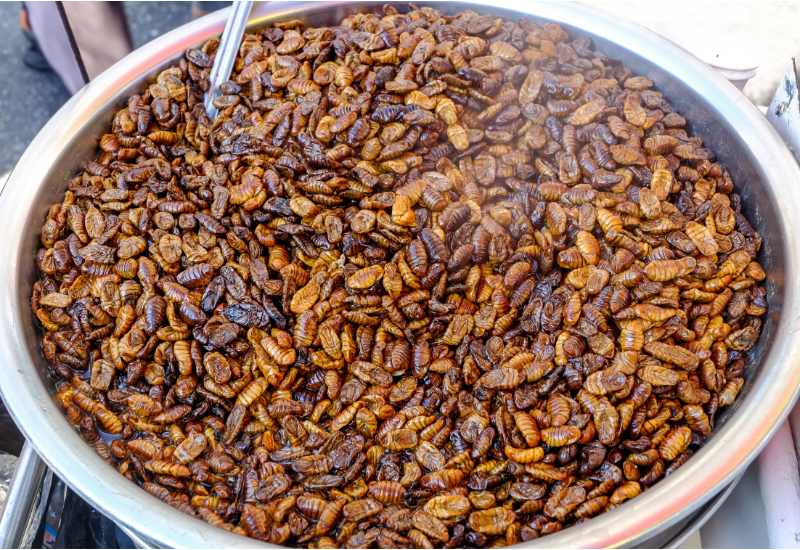
Beondegi is certainly one of the more unusual delicacies to try in South Korea but they are a very common snack served by street food vendors across the country. Quite simply, Beondegi consists of boiled or steamed silkworm pupae (silkworms that are going through the maturity transition process).
Whilst the smell and taste are strong but not unpleasant, the texture is the most curious feature of Beondegi because the larvae are like little bags that sometimes explode in the mouth when eaten.
Kongguksu
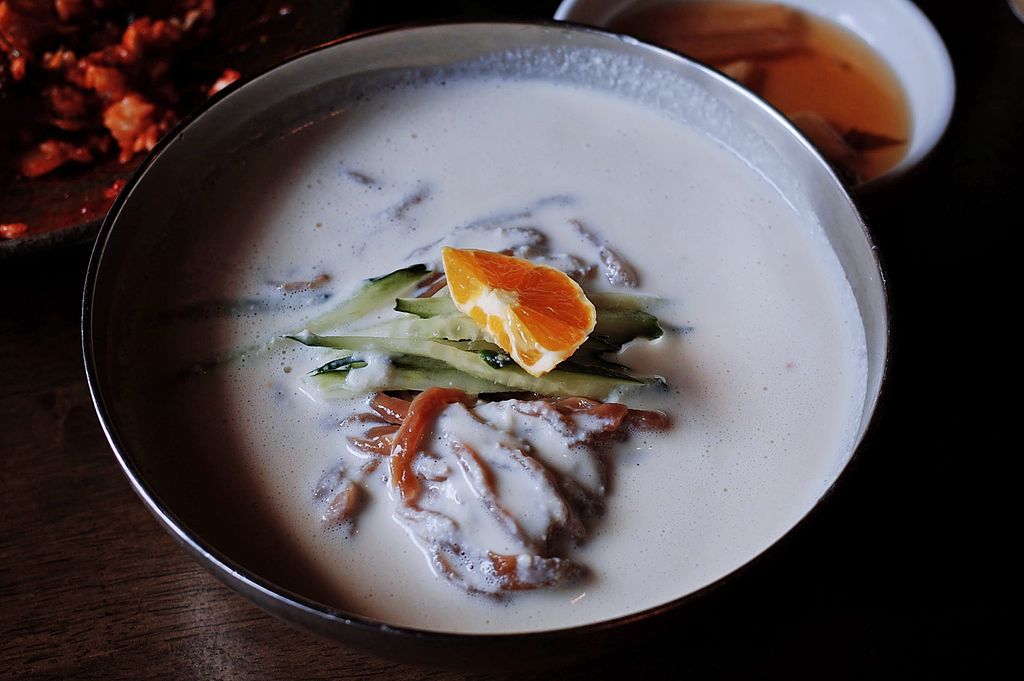
Kong-guksu is an acquired taste enjoyed by vegetarians, since it is one of the rare dishes that doesn’t involve meat! It is a mixture of noodles and soybeans which is served in a bed of savory soy milk. Kong means soybean while guksu means noodles. This highly nutritious dish is normally enjoyed in the summer.
Patbingsu
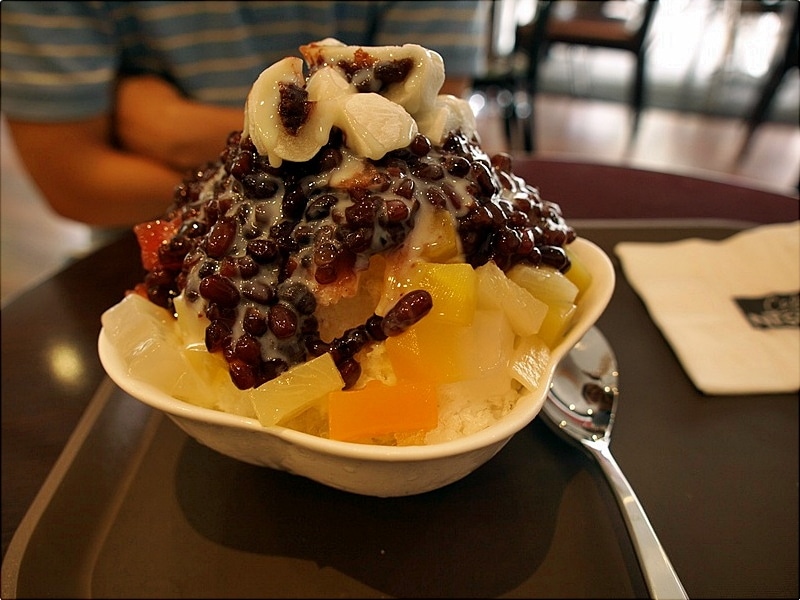
Patbingsu is a mouth-watering blend of condensed milk and ice shavings. The Koreans are not shy about portions so you should expect to be presented with a mountain of ice shavings. To top it off, some red beans (bingsu) and chopped fruits are added to the mix.
The huge bowl it comes with may have your eyes popping out but after one bite, you will want to hold onto the bowl for dear life!
Jjapaguri
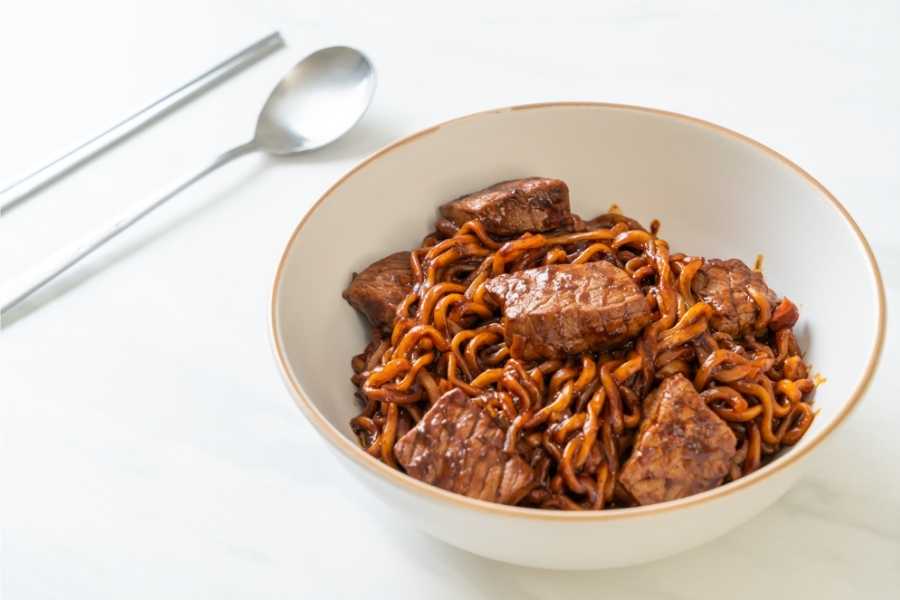
Jjapaguri is a noodle dish made by combining two different types of instant noodles. The two noodles used are Chapagetti and the other is Neoguri. Chapagetti is a wheat noodle which is accompanied by black bean sauce. Neoguri is an udon noodle with a slightly spicy seafood flavor.
Jjapaguri has been around for several years in Korea but it gained popularity in the west because of the film, Parasite. In the film the dish was featured in a dressed-up version with steak.
Garae-tteok
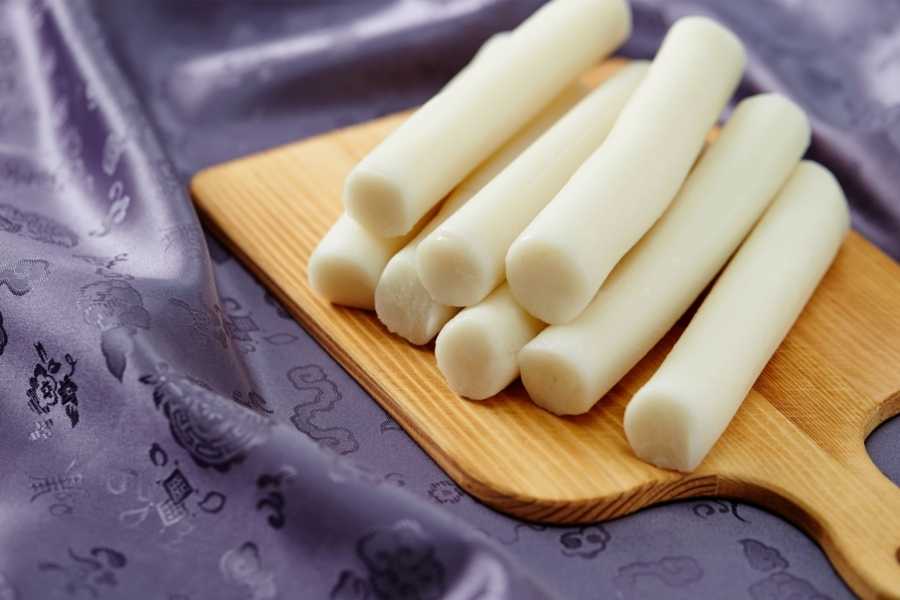
Garae-tteok is a type of Korean rice cake that is small in size and has a signature cylindrical shape. The rice cake dough is made from non-glutinous short grain rice flour, salt and water. The dough is steamed before being rolled and cut into cylinders.
Bungeoppang
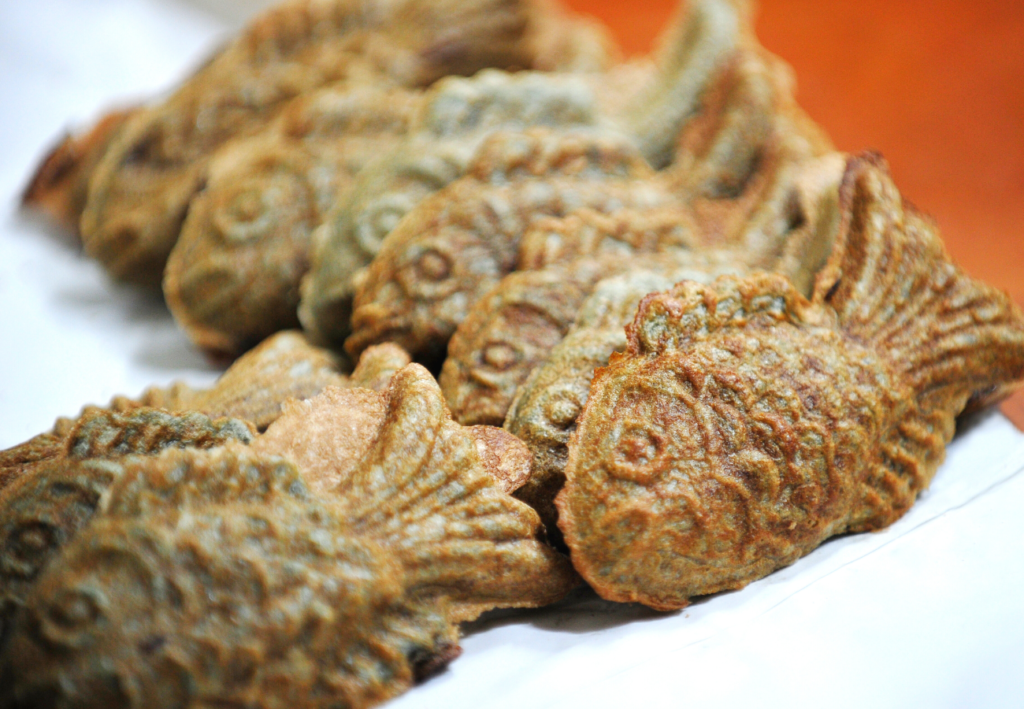
Bungeoppang is a fish-shaped bread, traditionally filled with a sweetened red bean paste. Crispy on the outside and soft on the inside, bungeoppang may also be filled with cream, chocolate or cheese.
The name ‘bungeoppang’ translates to carp bread due to the snack’s shape, but it does not actually contain any fish as its name suggests.
Jeon
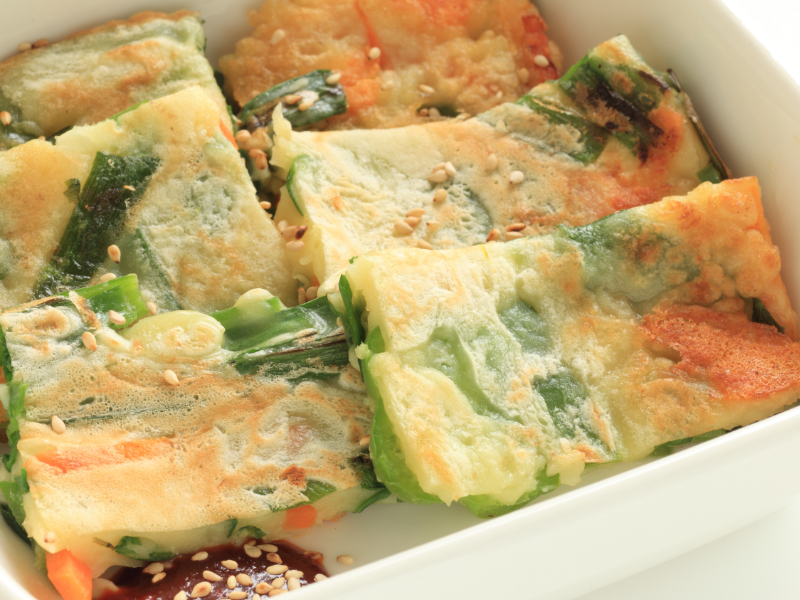
Jeon is a type of savory vegetable pancake made with flour, cabbage and often vegetables, kimchi and sometimes seafood. While it’s commonly eaten as an appetizer or side dish, Jeon can also serve as a main course when paired with a bowl of rice and kimchi.
Dakgangjeong
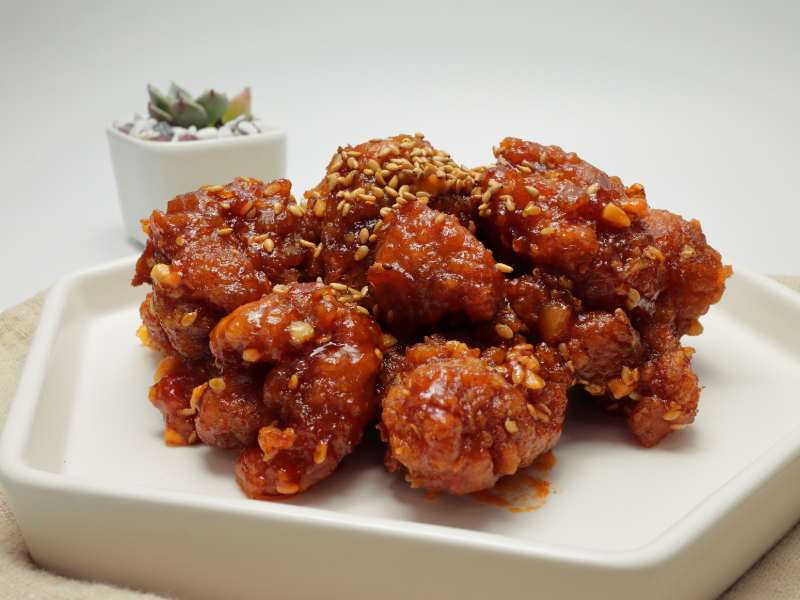
Dakgangjeong is twice-fried chicken that is battered in corn or potato starch and covered in a sweet and spicy soy sauce glaze. The use of starch as a batter and frying the bite-size pieces of chicken twice gives dakgangjeong a distinct crispiness that lasts even after being coated in sauce.
Odeng
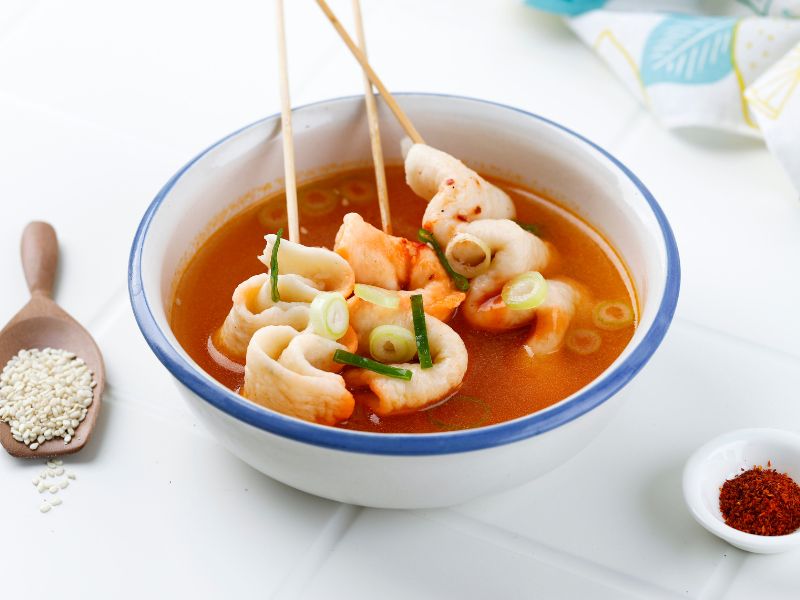
Odeng is a savory snack consisting of fish cakes, a local broth and umami. Also known as Eomuk or Oden, Odeng is made by adding fishcakes on bamboo sticks to a spicy seafood broth and is a street food staple and comfort food.
Traditionally made with corvina or cuttlefish, the fishcakes are either boiled in the broth or deep fried before being placed in the soup and served.
Dwaeji Gukbap
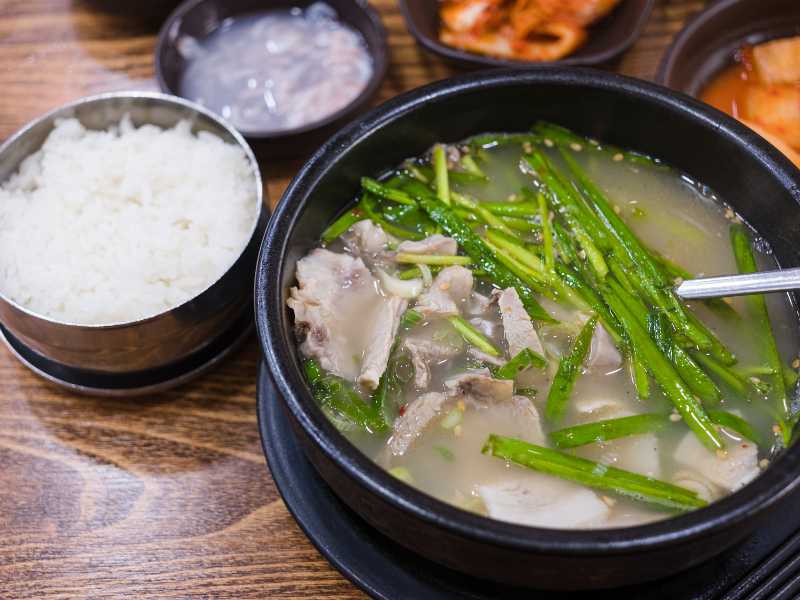
Dwaeji Gukbap is a traditional soup consisting of pork, broth, rice and vegetables. The broth is made by boiling pork bones over a long period of time to extract their flavor. Sometimes, additional pork pieces are added to the broth.
Sannakji
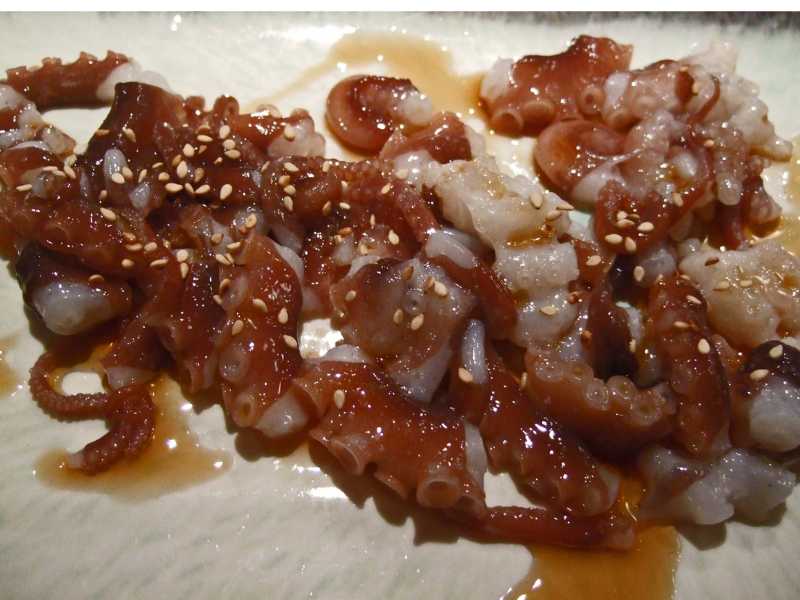
Sannakji is a South Korean delicacy in which octopus is eaten while still moving. The octopus is flavored with a mixture of herbs, oil and spices, just before it is consumed. It is eaten as a side dish alongside other small plates of sauce and vegetables.
Korean Corn Dogs
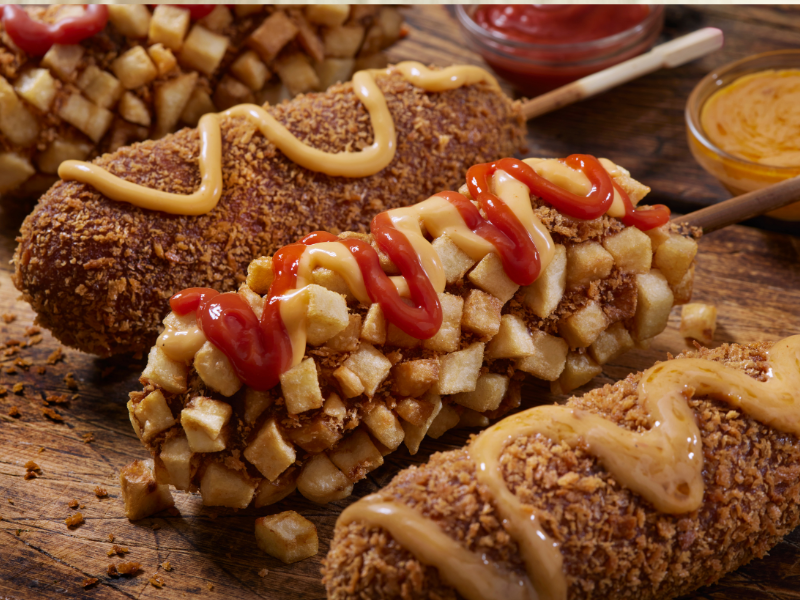
Korean corn dogs are a popular street food made from hot dogs and mozzarella cheese, which is coated batter and deep fried before being rolled in sugar and having other toppings added. The corndog is served on a stick and almost always covered in ketchup and mustard, as well as sugar.
Galbi Tang
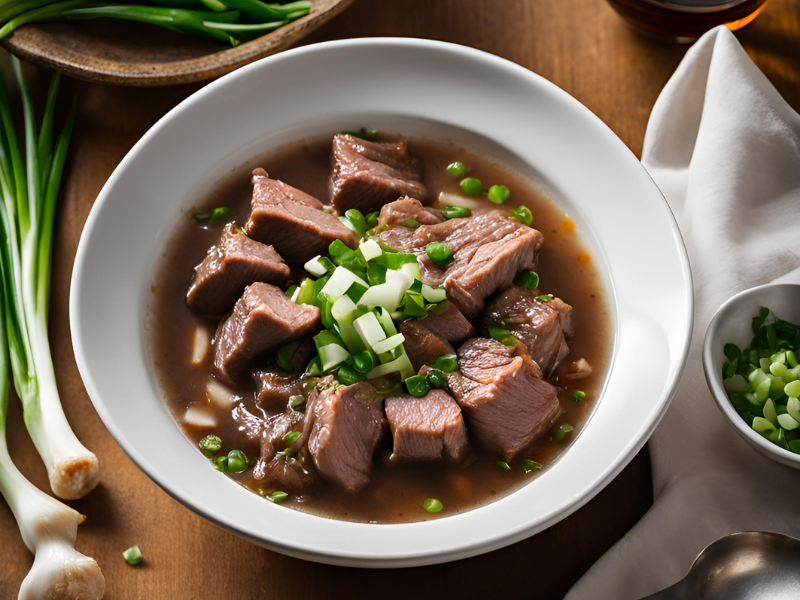
Galbi tang is a soup made with beef short ribs, seasoned with garlic and soy sauce. To make galbi tang, the beef is usually slow-cooked for a long period in the broth, making the meat tender and rich.
It is then commonly served with a side of steamed rice and a range of Korean side dishes such as kimchi.

